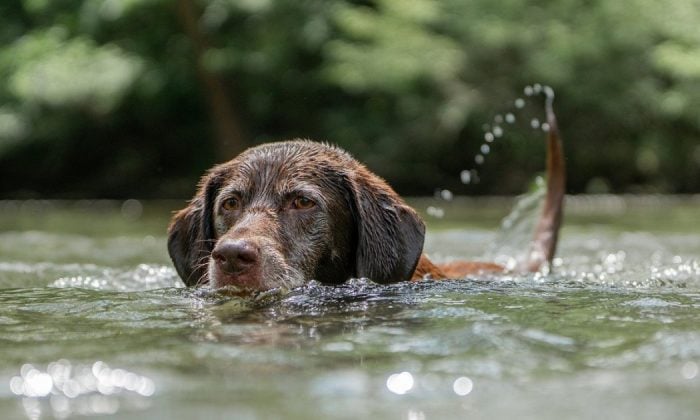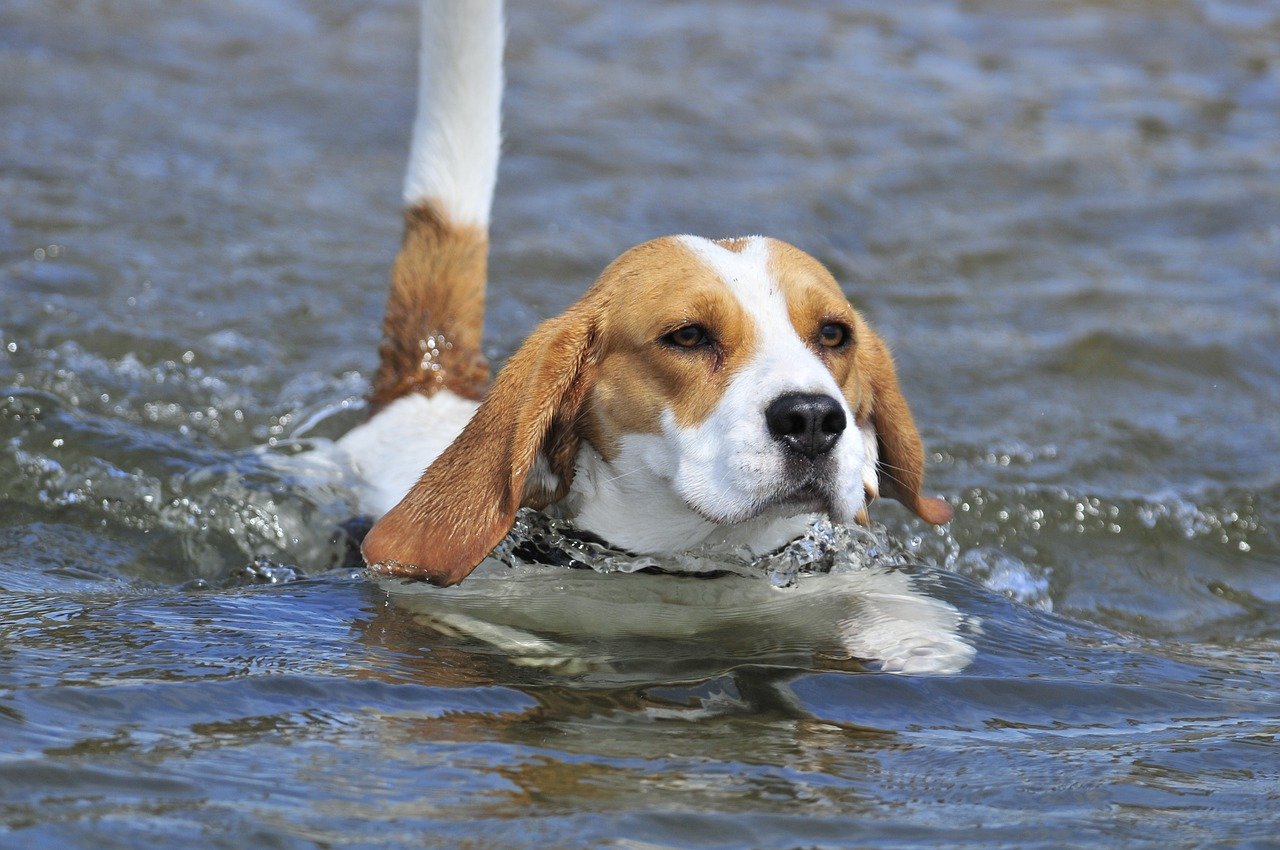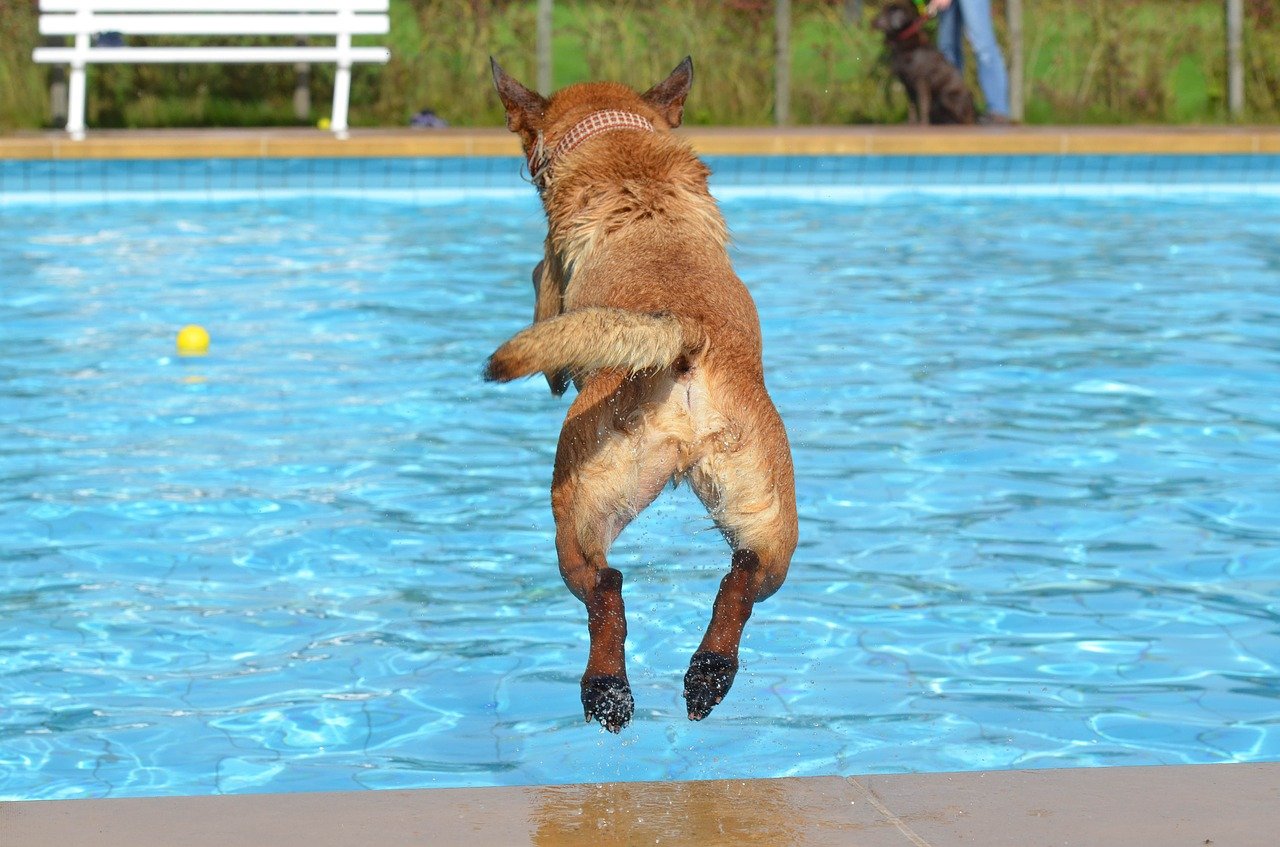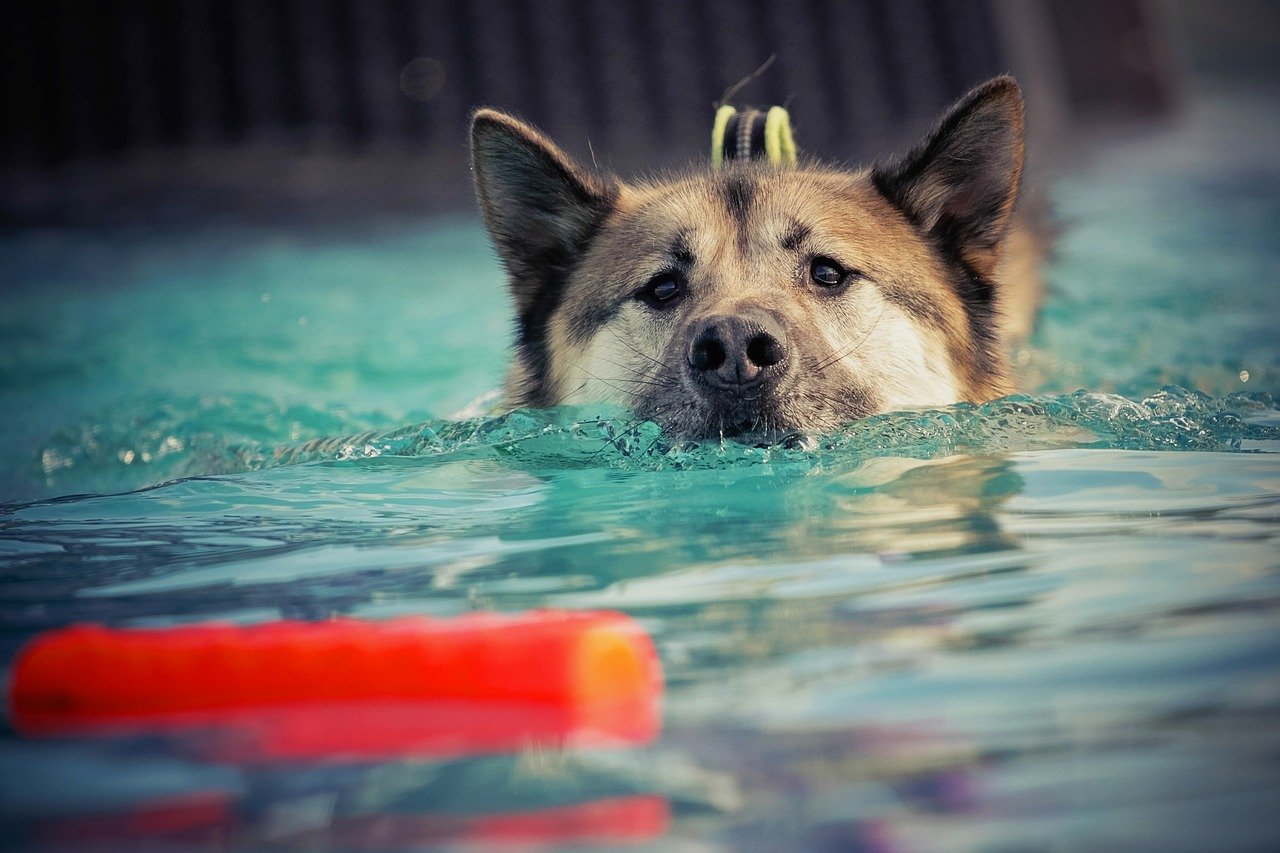Teach your dog how to swim. Which dog breeds love water?

Many dogs like water. That is a well-known fact… If you throw a dog in water, it will not drown. It will swim well and it may even have fun, right? This is how many dog owners think. However, that may not always be the true. You should never assume that your dog is an excellent swimmer. Patrika Březinová, PetCenter expert, agrees that you should never assume that your dog is a swimmer and adds:“Don’t assume that your dog can swim. Even if you have a puppy of a breed that usually loves water, it does not mean that your dog will be able to swim naturally.” So, when should you start “teaching” your dog and how should you do it?
When is the best time to start?
Well, the best time is when your dog is still a puppy. On the other hand, adult dogs usually learn to swim on their own… Swimming is an excellent activity for any dog. Young and old. Especially today, when many dogs do not get enough exercise.Swimming is a great way to keep your dog healthy and lean. How can you tell that your dog has been “destined” to be a good swimmer or not? “Dogs with short necks and long bodies like bulldogs have trouble keeping their heads above the water. Even some retrievers who are natural swimmers need a bit of practice before they get comfortable with their particular swimming technique,” says Březinová.
Photo: Pixabay
A simple swimming test
Yes, you should do a simple swimming test. Here is an example how you can do that“Place your puppy on water surface and hold it there. If it only uses front paws to swim or tries to keep them out of the water or slaps them around chaotically, it needs help learning. If you provide little support it should learn how to use its rear pawns too and manage to stay afloat,”explains Březinová.
Best dog swimmers:
- retrievers,
- poodles
- and the Newfoundland dog.
Breeds that do not like water much:
- bulldogs,
- dachshunds,
- pugs,
- bassets
- or corgi.
Photo: Pixabay
These breeds need to learn and practise
First, take the dog where the water is shallow and do not rush it. Go step by step and gradually increase the depth of the water. Teaching time should not exceed 10 minutes. No cold water. Your dog may suffer a shock or so-called a dead tail syndrome, which is very unpleasant for a dog. In extreme cases, the tail may get “paralysed” and the dog will not be able to control it.
Photo: Pixabay
Training structure
- Fetching “stuff” from water can be an excellent motivation.
- The dog should know the path that leads out of the water.
- If you are both in the water be careful. Make sure that your dog will not get above your head. If it panics it may even drown you.
- Dogs should swim no sooner than 2 hours after feeding as it may experience bloating.
- Clean dog’s ears after swimming.
Source: PetCenter
Preview photo: Pixabay

Gardening is my hobby, I have a lot of experience and I am happy to share it.











0 comments